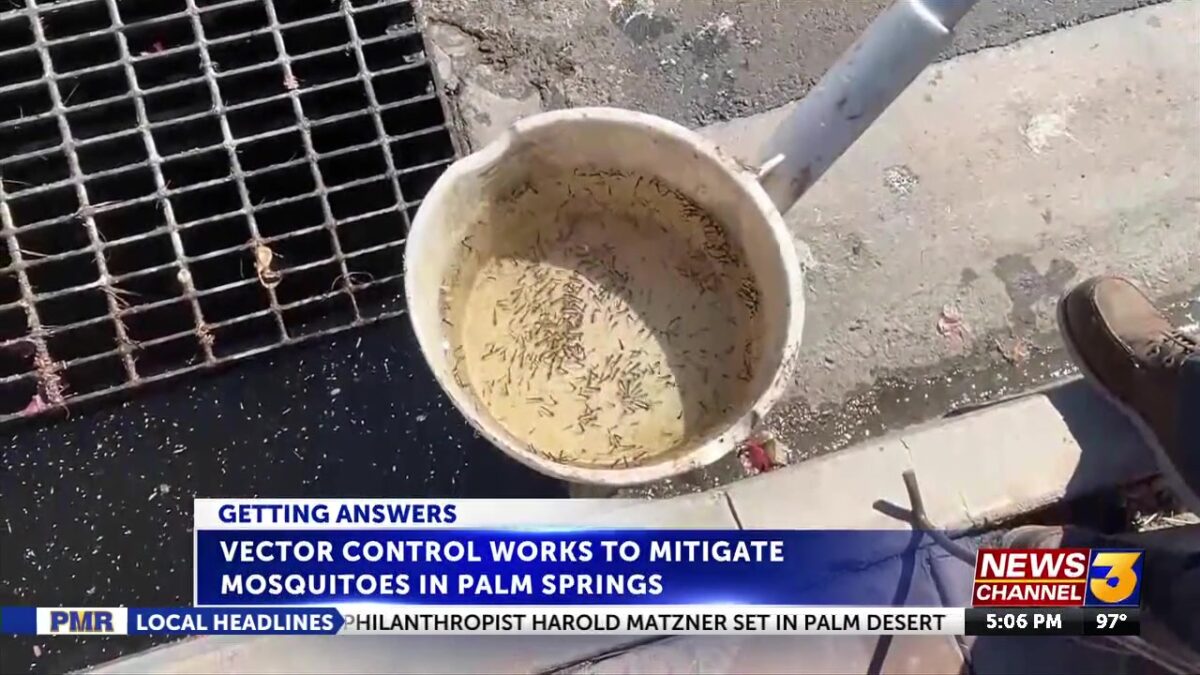Palm Springs treatments start by Valley mosquito, vector control after West Nile virus discovery

Kendall Flynn
PALM SPRINGS, Calif. (KESQ) – Mosquitoes collected from a routine surveillance trap in the City of Palm Springs have tested positive for West Nile virus (WNV), according to Coachella Valley Mosquito and Vector Control District.
The sample discovery was taken near the intersections of South Camino Real and East La Verne Way. This is the first WNV-positive mosquito sample reported in Palm Springs this year and the 11th in the Coachella Valley.
News Channel 3 brought you the first WNV discovery of the year in the North Shore community in May. Now the latest discovery is prompting the City of Palm Springs to alert its residents. With recent rain, the mosquitoes are more likely to be around, especially near still water.
Now the Coachella Valley Mosquito and Vector Control District is working to treat areas in Palm Springs, including hot spots for breeding and at residents homes. The district’s Public Information Manager Robert Gaona said it’s a process of killing the mosquito larva before it reaches adulthood for maximum mitigation.
“Each mosquito will lay, 300 eggs,” Gaona said. “So, it is best to treat them when they’re in water to prevent them from becoming adults. It’s much easier and more effective to get rid of them before they’re flying around their communities.”
From storm drains throughout the city alone, thousands of mosquito larva swim near the surface. Vector control takes a sample to determine the breed of mosquito before deciding what method of treatment they need to use. It is often an oil-based treatment sprayed on the surface to inhibit the larva from reaching it.
 Mosquito larva sample taken on the corner of E Tachevah Drive and N Avenida Caballeros.
Mosquito larva sample taken on the corner of E Tachevah Drive and N Avenida Caballeros.
Jonathan Herrera, vector control technician two, said the treatments are efficient until it rains. The storms wash away the original oil treatment, forcing them to consistently return to the area. He said with the rain also comes more mosquitoes around still water.
“It all depends especially with the rain events that we are scheduled to have this coming up Thursday and Friday,” Herrera said. “Unfortunately, that’s just the nature of the beast. But in the meantime, you could always…remove any stagnant water, also use repellent.”
Stay with News Channel 3 to hear from officials on what treatment looks like and what residents need to know.